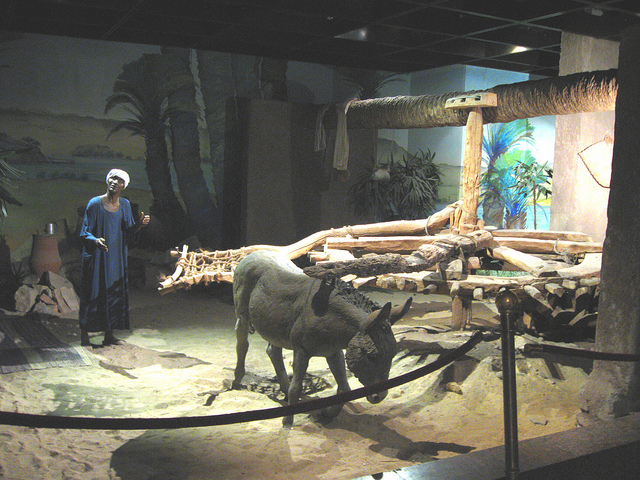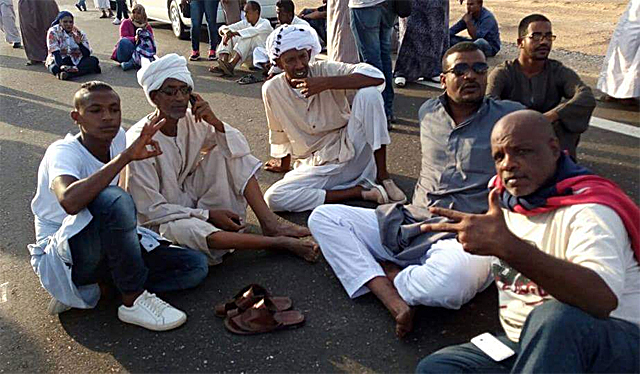A statement by the young Nubian activist Siham Othman was widely quoted after she was arrested, along with 23 other protesters during their peaceful demonstration in Aswan early last September. She was quoted again two weeks ago in an Associated Press news report reviewing the reasons for the Nubian discontent. The writer, Hamza Hendawi, is a senior reporter for the Associated Press.

Othman told the AP that she was deeply affected by the stories of her grandfather, who was one of the Nubians expelled from Old Nubia before the closing of the Aswan High Dam flooded his village in the mid-1960s. Although he then became a sailor and traveled a lot, he only told stories to his younger family members about life in Old Nubia. “He is the one who planted the dream of return in me,” the 30-year-old said. Displays of life in Old Nubia in the Aswan Museum are probably not especially satisfying for her.
The article by Hendawi explains the reasons for the protests. Basically, the issue is that the Nubians are a separate minority ethnic group in Egypt, people who have darker skin than the majority Arab population and who speak, or used to speak, Nubian, a distinctly different language. Hendawi writes that there are an estimated 3.5 to 5 million Nubians now living in Egypt along with the other 90 million Arabic Egyptians.

Older Nubians still treasure their memories of life in the villages that were flooded in the 1960s: large, vividly decorated houses; fields that were deep with silt deposited by the annual floods of the River Nile; deeply-rooted bonds with the river. On holidays they put dishes in the river to watch them float away. But almost all of Old Nubia was destroyed by the Aswan High Dam which forced some 55,000 people out of their villages in 1963 and 1964 since they would soon be beneath the water of Lake Nasser.
The authorities at the time promised the Nubians that they would be provided homes in new villages north of the city of Aswan and the High Dam. However, when they attempted to move into their resettlement communities, the people discovered in some cases that their new houses were not even built, or they were much smaller than the homes that they were used to. And worst of all, they did not front on their beloved Nile River. They were miles away from the water.

The evacuees felt deceived, according to Mohammed Dawoud, a 71-year old. Many of them moved to the cities: Aswan, Alexandria, or Cairo. But that older generation mostly accepted what had happened—they tended to believe the stories of the government that the huge dam was built to benefit all Egyptians. The Nubians of that time attended conferences but did not get much involved in street activism. But, Ms. Othman told the AP, her generation has a “new spirit.” However, the government is not allowing that new spirit to be expressed publicly. A protest involving a convoy of vehicles in 2016 was intercepted by officials and forced to turn back. The protest in September 2017 was broken up by the security forces and the protesters were arrested.
The AP article describes the growing Nubian demands in terms of their determination to reclaim their identity, their language, and their lands. Their right to resettle along the Nile was affirmed by the current constitution of Egypt, approved in 2014. It also recognized the Nubians as an ethnic minority in the nation. But the problem with the state recognizing the rights of the Nubians is that the elites running Egypt, led by President el-Sissi, seem to feel that the national stability is threatened by the expressions of those minority rights.
This excellent overview of the current situation among the Nubians could have been improved by referring readers to the traditional peacefulness of the people in their villages of Old Nubia, with references to some of the classic ethnographies such as the book by Robert A. Fernea (1973), Nubians in Egypt: Peaceful People.